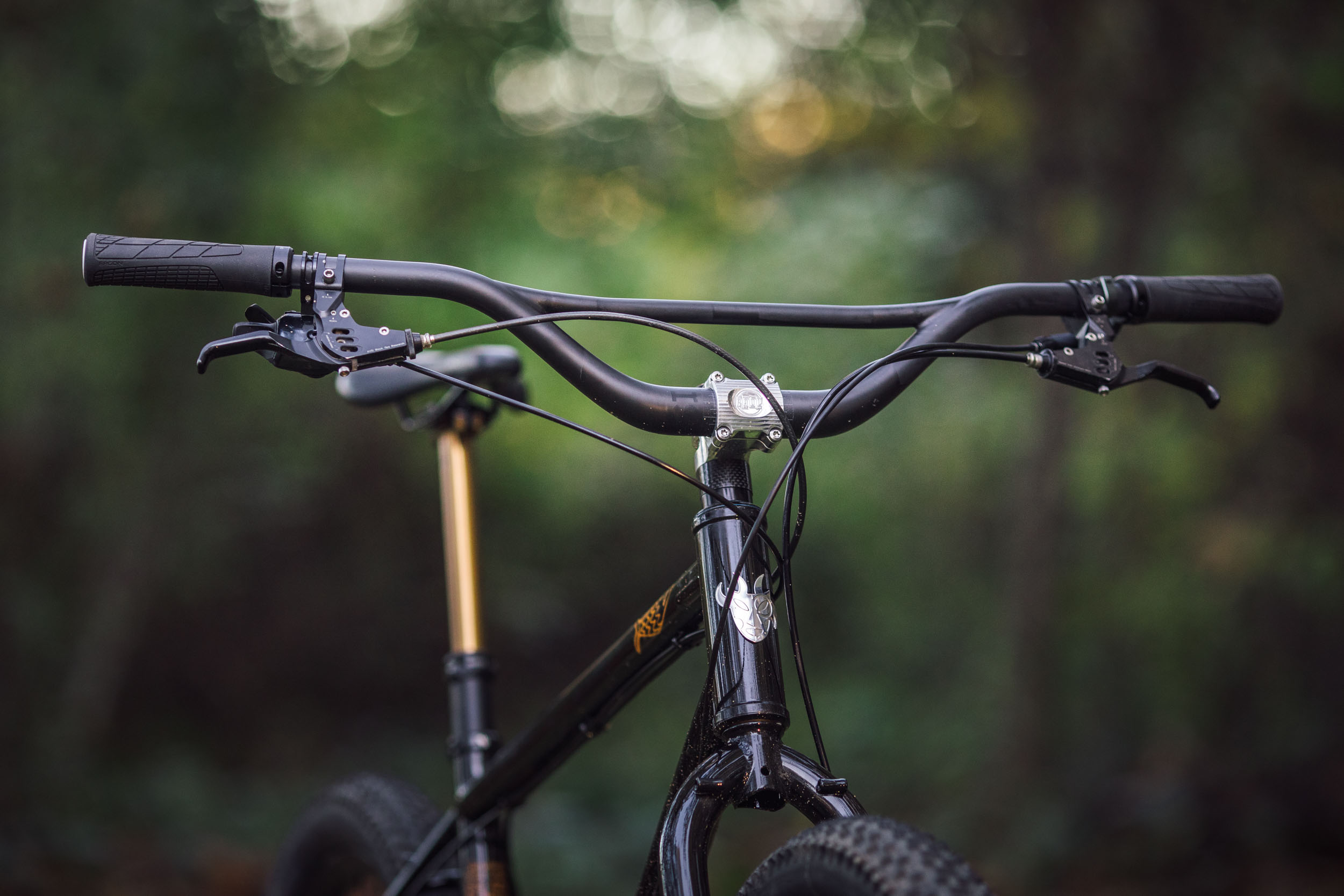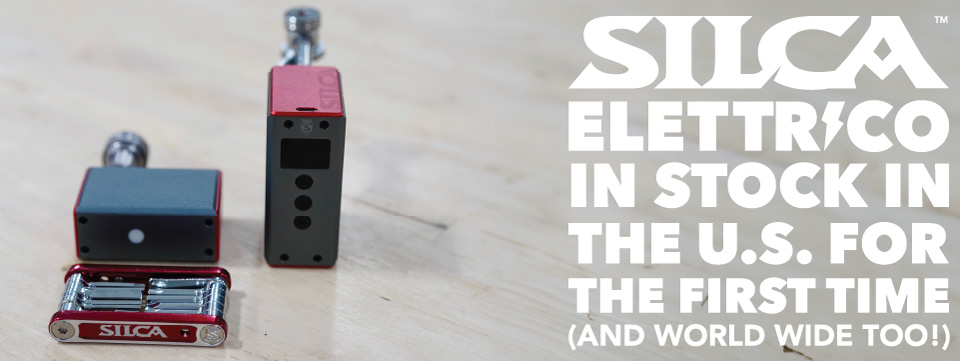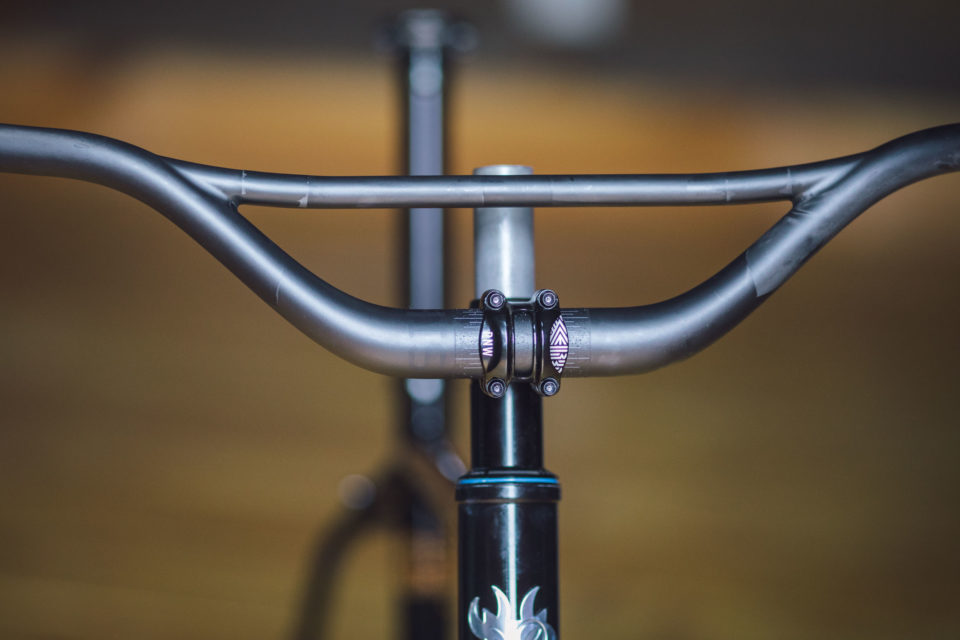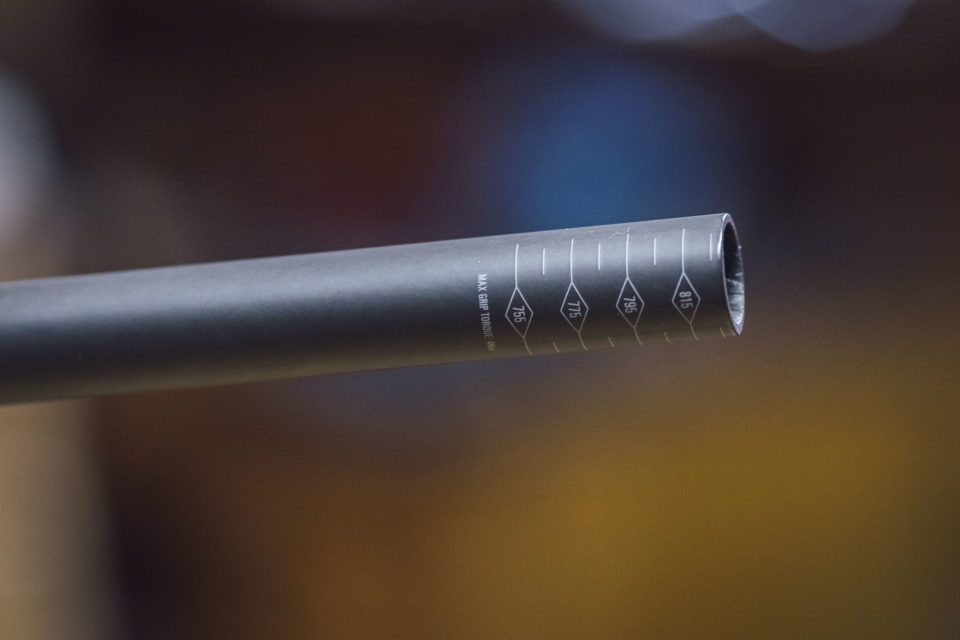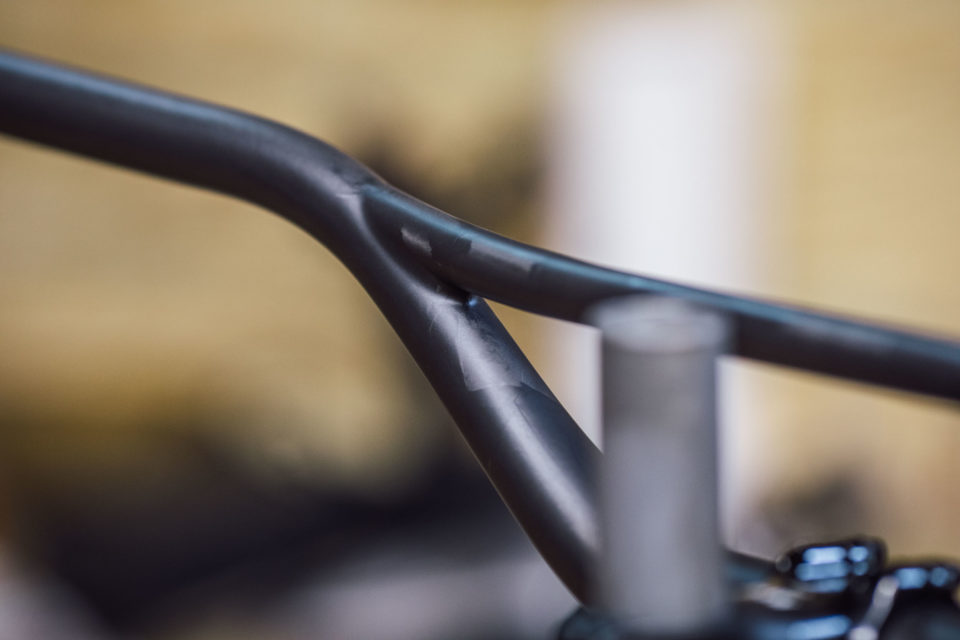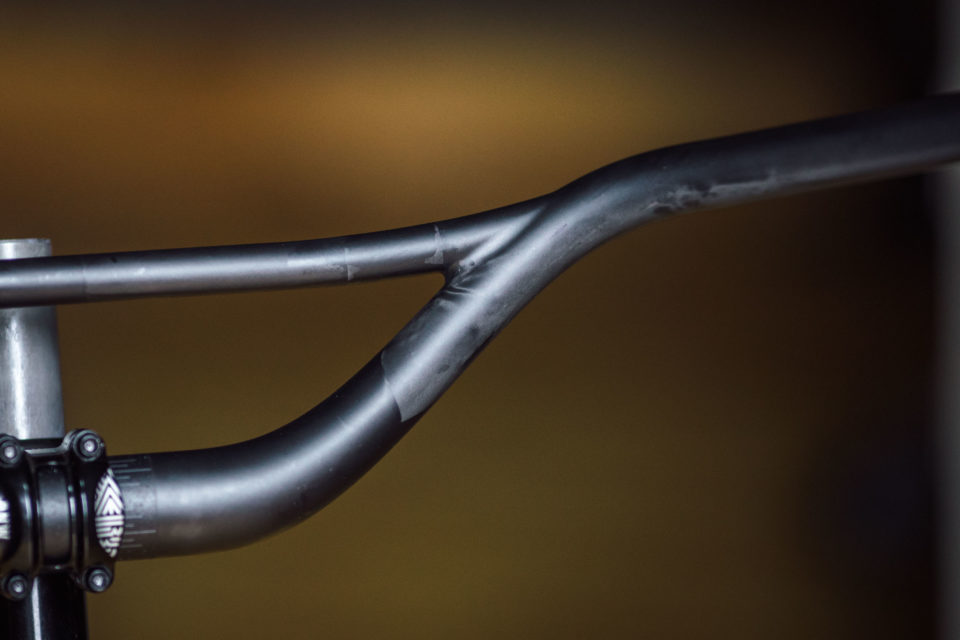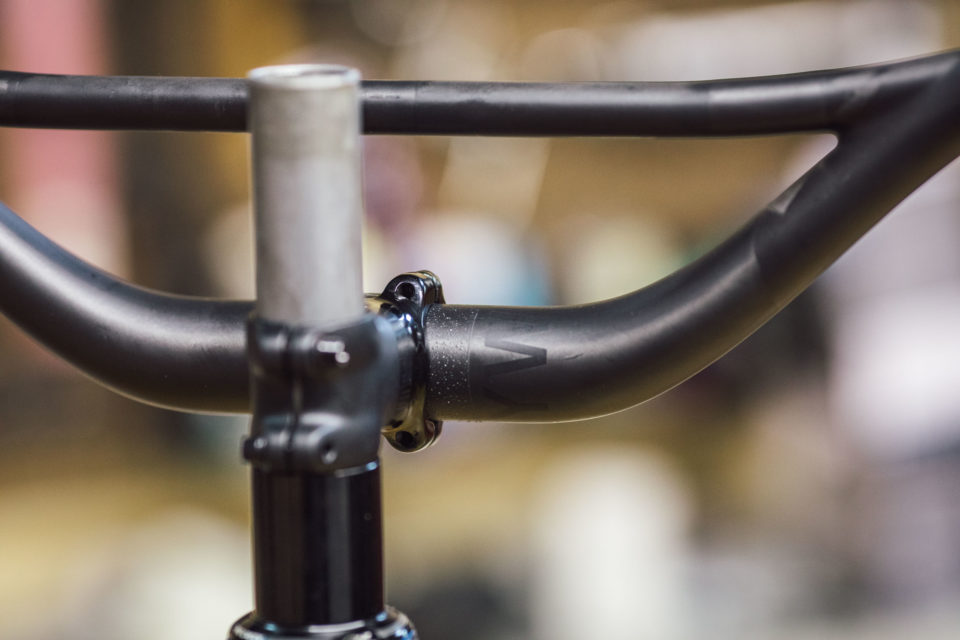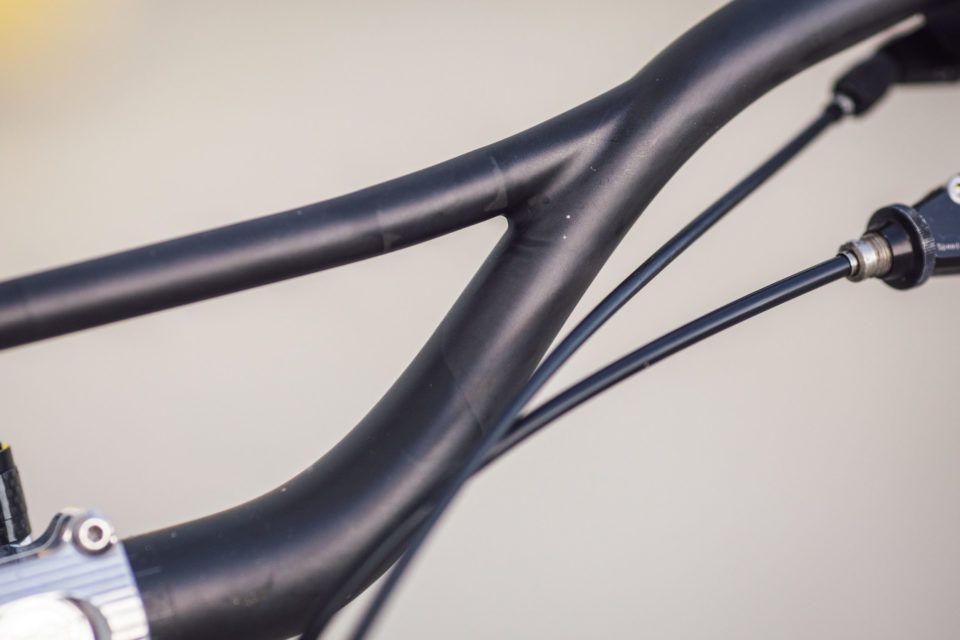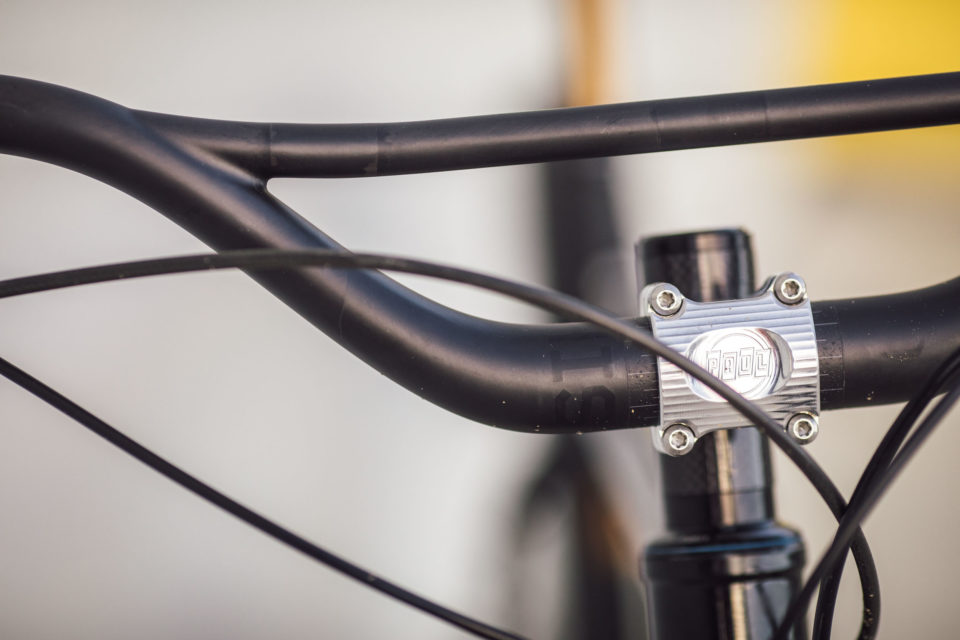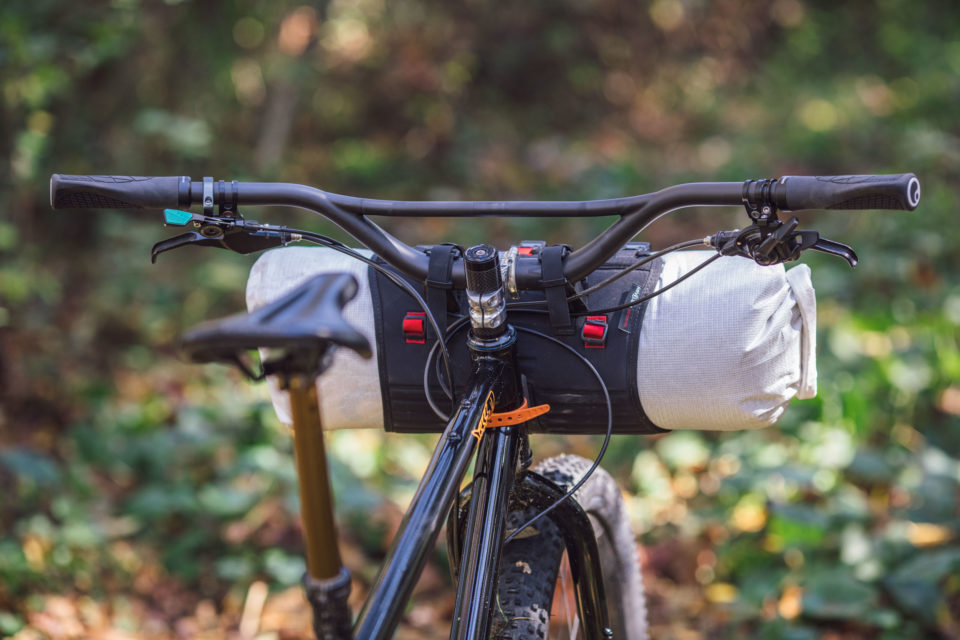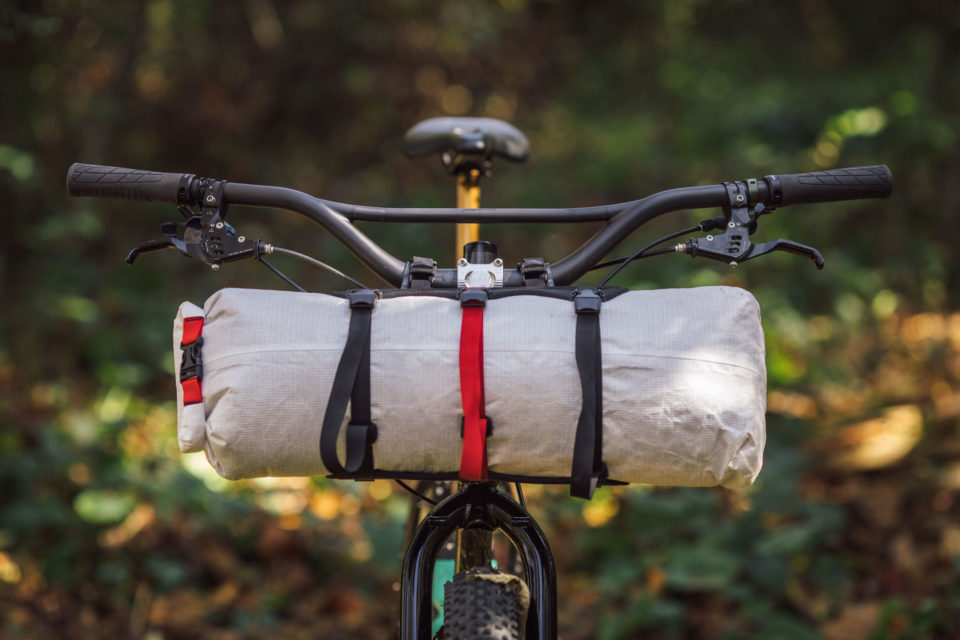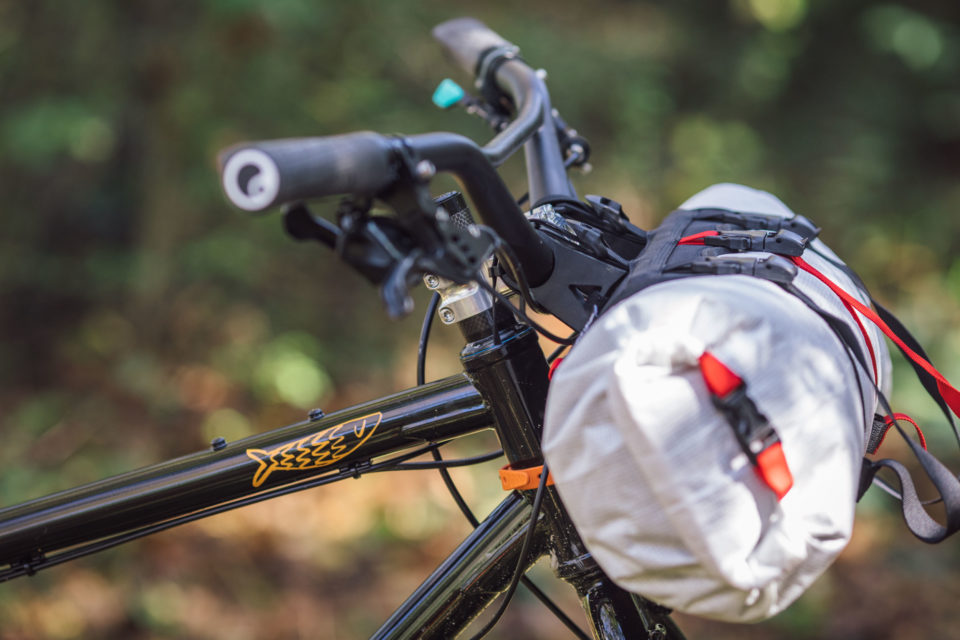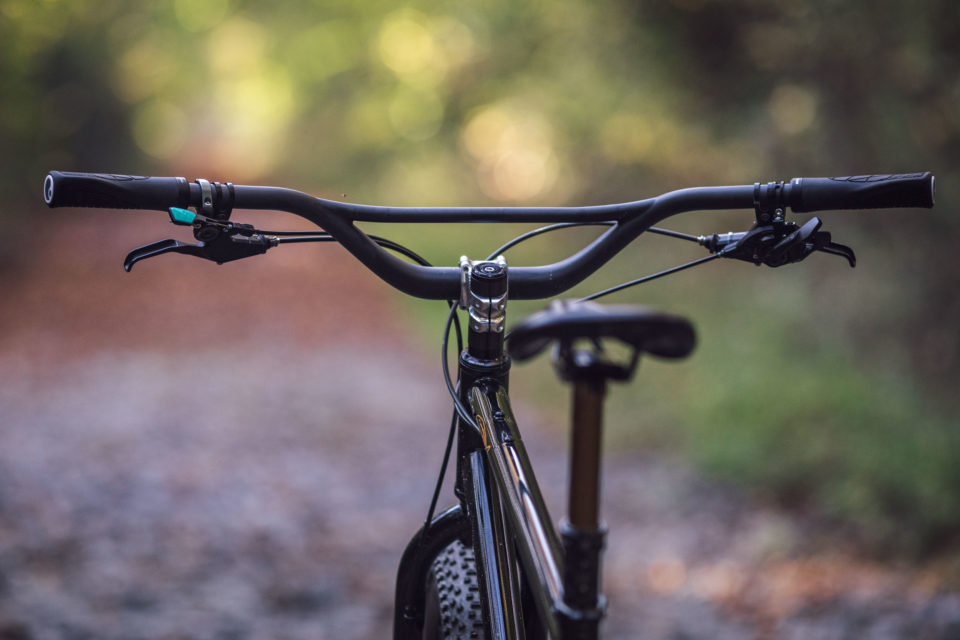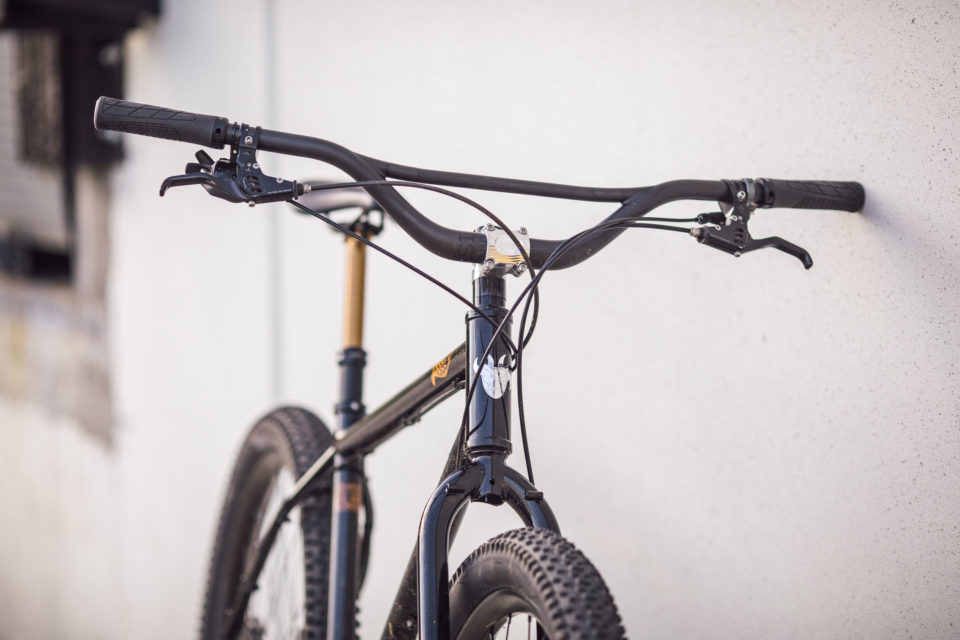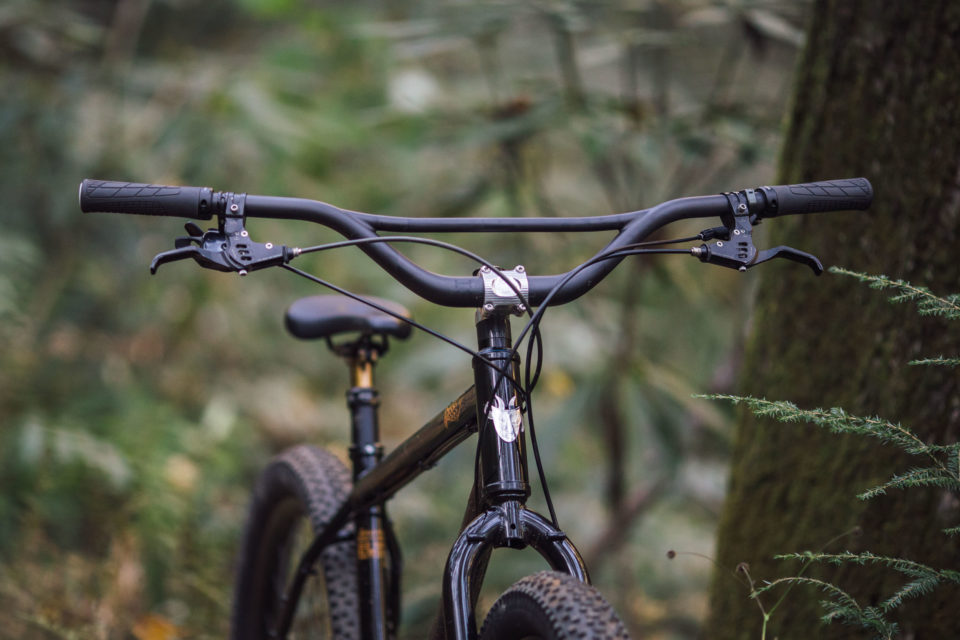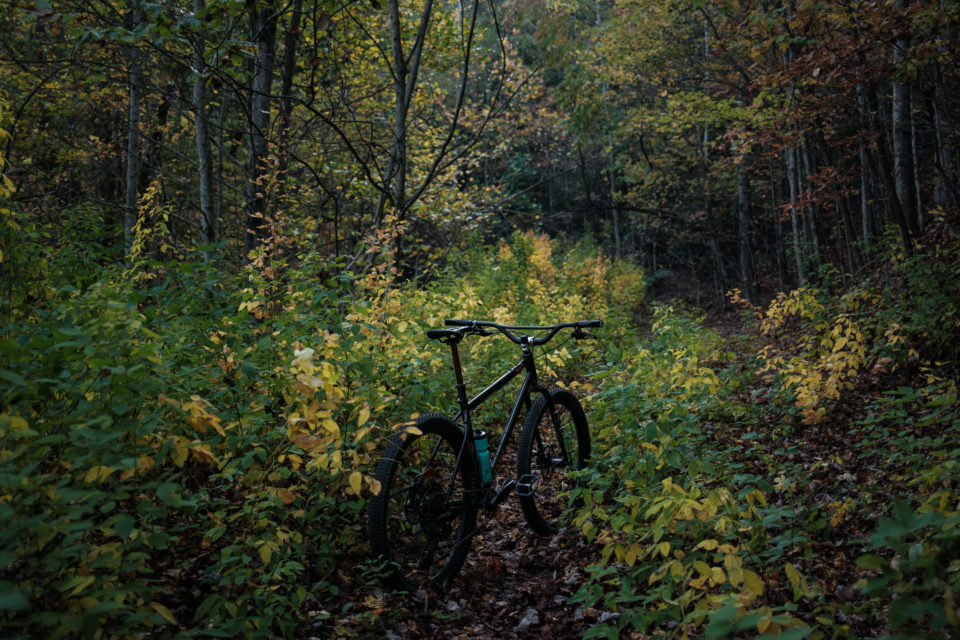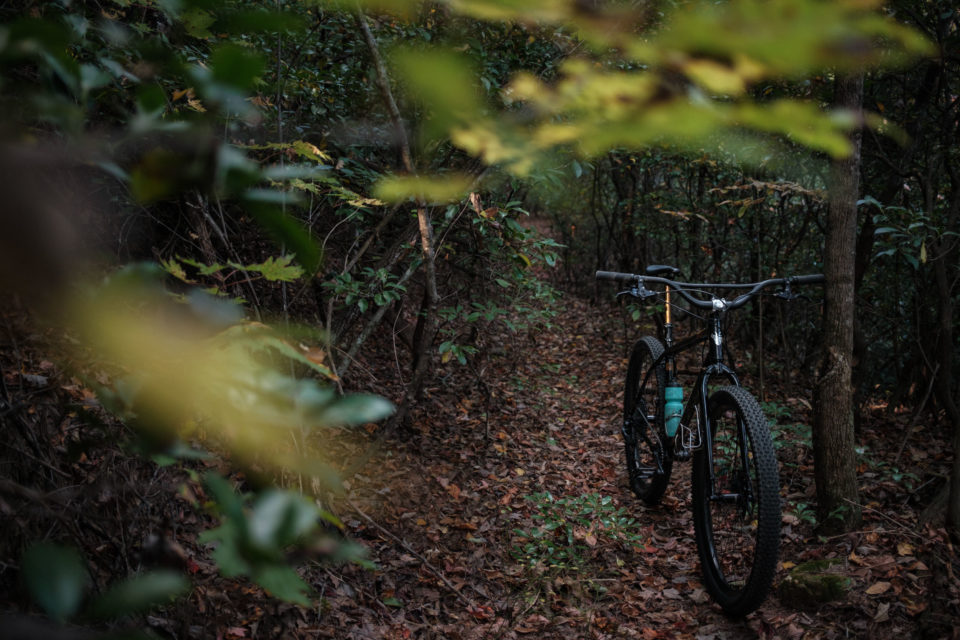First Ride Review of the New Whisky Milhouse Handlebar
Just released, the new full-carbon, moto-inspired, 825mm-wide Whisky Milhouse Handlebar is a one of a kind. We had the chance to mount one up and take it for a few test rides prior to release. Here are the details and a first ride review…
PUBLISHED Oct 16, 2020
Not only is it wider and taller than most bars on the market, the brand new Whisky Milhouse Handlebar has the distinction of being the first of its kind to market: a full carbon moto-inspired riser bar. The Milhouse features 825mm of width, a 70mm rise, 16 degrees of backsweep, and an 8° upsweep. According to Whisky, it’s designed for mountain biking and it’s been tested and approved for getting rowdy on the rough stuff. I had the opportunity to take it out on some local singletrack for a several rides prior to the release. Read on for details.
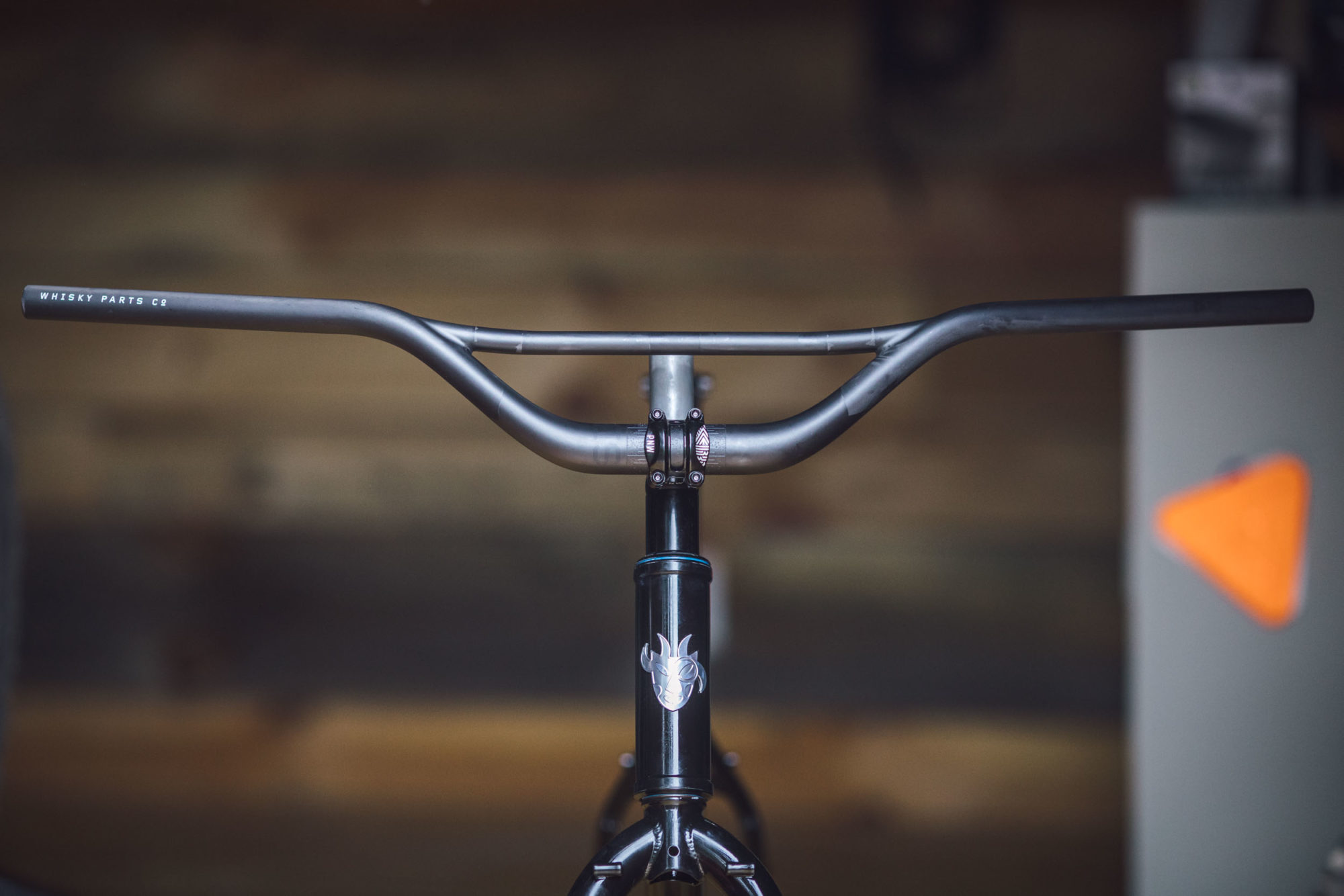
While there are some handling characteristics and other hidden benefits (which I’ll get to) that high-rise, moto-style handlebars bring to the trail, they’re arguably all about retro aesthetics. The Milhouse Handlebar aims to blend that vibe with a refined lightweight carbon construction, although that’s a little ironic considering the fact that it’s carbon will inherently irritate the luddites among us. When I first saw it, the idea of some sort of freak hybrid bike sprang to mind—an ultralight klunker or lugged steel single speed plus-tire rig with a carbon fork. And that’s kind of what makes it cool. The bar tips the scales at just 286 grams, which is a fraction of the weight of a typical moto-style riser bar, such as the 780 gram Surly Sunrise bar or the 700 gram Oddity Razorbar (both chromoly steel). It also has that nice vibration dampening quality that’s common to many carbon bars. And, like other carbon MTB bars I’ve used, you can feel a little flex, which adds some comfort on bumpy trails. That’s especially welcome on a rigid bike.
The Milhouse is ridiculously wide, which will please the big folks. At first, I thought it might be a little too wide for me—I’m right around six feet tall with normal length arms and usually run an 800mm bar on my trail bike. However, the perfect 16-degree sweep tames the width a little, and I settled into it after a few miles. I did bash my pinkies on rhododendron a couple times during my first singletrack ride on an otherwise very familiar trail. I think I’ll get used to it; I’ll just have to get reacquainted with several trees along the way. I fell in love with it on my second ride. The width and angles feel great when wrenching up climbs out of the saddle—another reason this bar might be perfect for a single speed—and ultimately very fluid and commanding on technical singletrack. All that said, Whisky printed trim-lines in 5mm increments on the bar ends for those interested in sizing down.
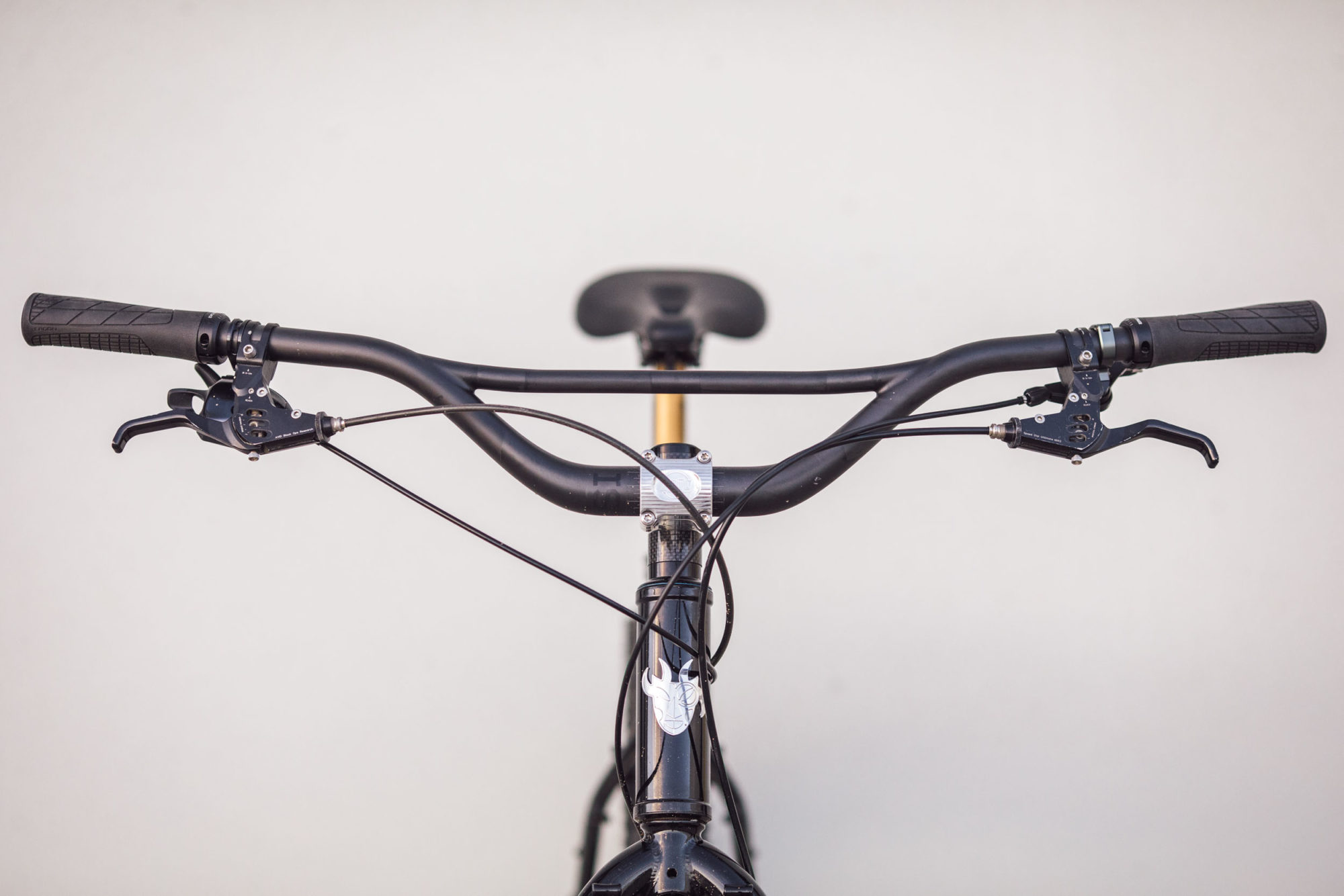
A Riser Bar for Bikepacking
One thing that’s great about running a front harness, saddlebag, or roll bag on the Milhouse—or any other high riser bar—is that it keeps the brake levers, controls, and cabling out of the way of the bag itself. For those who’ve used a Sweet Roll with a flat bar and SRAM brakes, you’ll get it. Having to rotate brake levers down at 90° is no fun. The Milhouse’s huge 70mm rise, coupled with the 16° backsweep, keeps all the controls at a comfortably safe distance from the bag.
Another benefit is a slightly lower bag placement. Adjusting your preferred stack to fit with the extra 70mm of rise will likely mean lowering the bars and removing headset spacers. This will effectively lower the bag and its weight, which is a nice little perk in my opinion. However, this may cause an issue with tire/bag clearance, especially if you’re using a suspension fork. With this bike as it’s set up, certain larger diameter bags might be problematic with a suspension fork, considering my preferred low stack.
That leads me to one more point to take into account: whether the added stack from a riser bar will work for your anatomy. Since I built up this Nordest Sardinha II, I’ve been lowering the stem and playing with saddle adjustments trying to dial in the fit. I’m sill not quite there and may need to slam the stem all the way down to the headset to relieve pressure on my hands. I have long legs and a relatively short torso, so my saddle is always a few centimeters above the handlebars. That said, this is a sized up frame for me with a high stack, so it’s a little abnormally challenging to fit. This likely won’t be an issue for most people.
One small gripe I have with the Whisky Milhouse as it pertains to bikepacking is a lack of extra real estate on the clamp area. I wish that Whisky would have added about 5mm of flat space on either side to better accommodate straps. To be clear, it works with both the Revelate Harness and Sweet Roll, but only barely. A little more wiggle room would be nice.
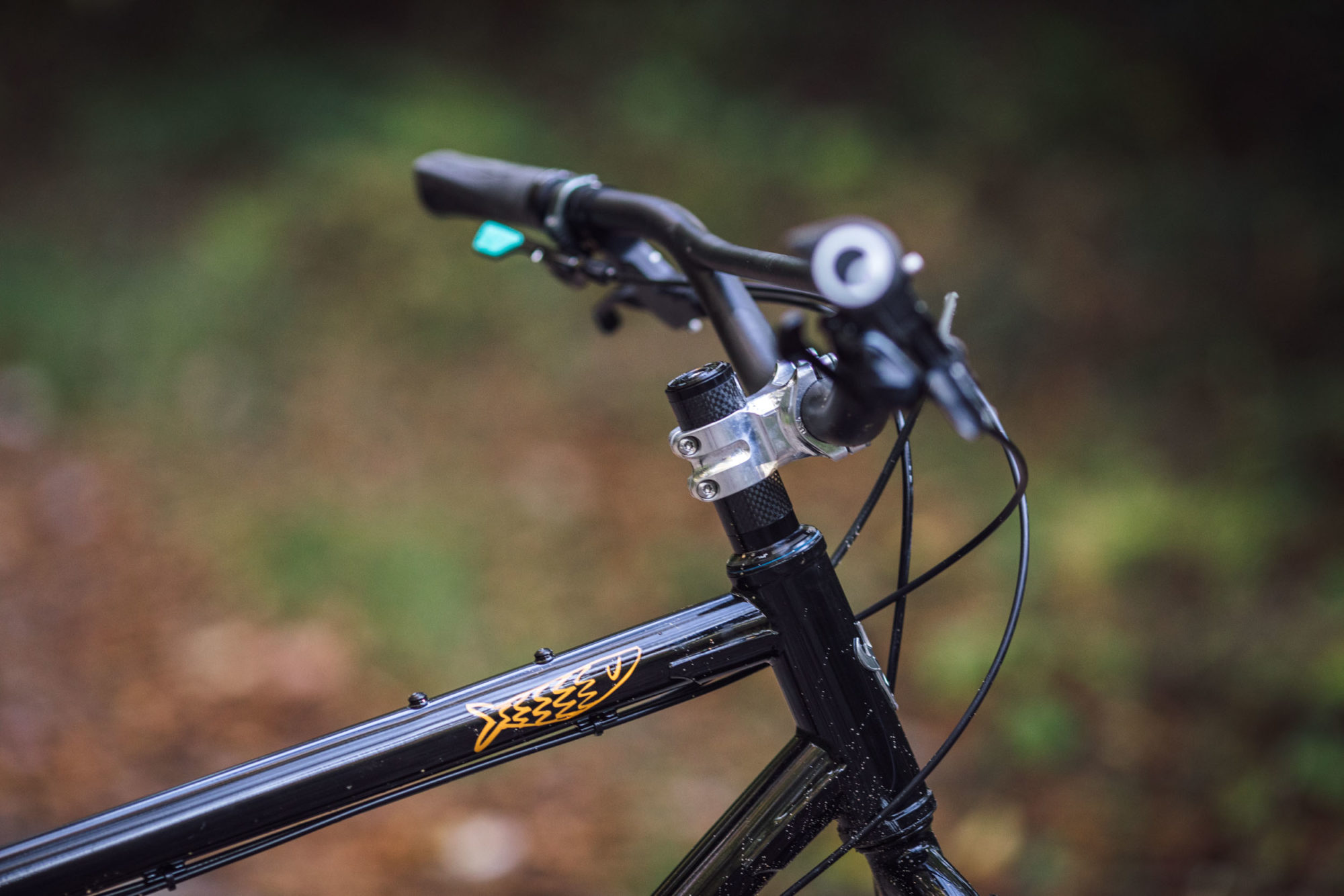
Pros
- Wide stance and 16° backsweep feel perfect, particularly when wrenching up hills, out of the saddle
- Provides just enough flex and vibration dampening
- Large rise and moderate backsweep keep levers and controls out of the way of front bag
- Very lightweight (over a pound lighter than some chromoly moto-riser bars!)
Cons
- Added stack might be too much for some people (and tricky for bike fit)
- I wish there was a hair more real estate in flat/clamp area
- Pricey when compared to chromoly and aluminum bars
- Width: 825mm
- Upsweep: 8°
- Backsweep: 16°
- Rise: 70mm
- Clamp Diameter: 31.8mm
- Weight (actual, uncut): 286g
- Price: $215 USD
- Manufacturer’s Details: WhiskyParts.com
Wrap Up
It’s hard to beat handlebars with a little extra rise and sweep for bikepacking. Not only can this improve the riding position for most folks, it also keeps the brake levers and cables out of the way of the typical front bag set up. For my preference, Whisky nailed the backsweep with the Milhouse, and it seems to have the right construction to give it a nice feel for added comfort. I wish they would have added a little more space on the flat clamp area of the bar, but it works with the bags I tried.
Overall, it’s a really nice bar with a significant price tag. But if you’re looking to shave off some weight, add a bit of rise and back sweep, and increase the comfort level of your cockpit, it might be worth the investment. I only have about five rides on it at this point, so I’ll be sure to update this review down the road once I put some more miles on it.
Please keep the conversation civil, constructive, and inclusive, or your comment will be removed.







